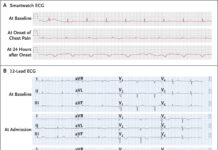Case Presentation
A 20-year-old Caucasian woman was diagnosed with juvenile rheumatoid arthritis at the tender age of eight. By the time she reached 12, she had experienced complete remission, allowing her to cease therapy with azathioprine and methylprednisolone. However, in May 2017, after eight years of uninterrupted health, she faced a relapse of symptoms. Following a viral respiratory infection, she developed facial oedema and Raynaud’s phenomenon, prompting medical attention.
SLE Diagnosis
Two months later, her condition took a dramatic turn as she was admitted to a county hospital. She had pericarditis, pleuritis, and ascites. Laboratory findings revealed anaemia, leukopenia, and moderate proteinuria, which added to the complexity of her case. However, her kidney function and platelet count remained within normal limits. Immune serology testing uncovered a slew of abnormalities, including positivity for antinuclear antibody (ANA), elevated anti-Smith antibody (SM) and anti-U1-ribonucleoprotein antibodies (anti-U1-RNP), and diminished complement levels. These findings led to the diagnosis of systemic lupus erythematosus (SLE).
Management
Doctors restarted her on azathioprine and methylprednisolone therapy, which caused a noticeable improvement in her clinical status. However, just three weeks later, she presented to the emergency department with severe respiratory distress. Laboratory investigations revealed the presence of a severe acute kidney injury, hinting at a potential autoimmune aetiology. A high-dose regimen of methylprednisolone was swiftly initiated. She was promptly transferred to the intensive care unit for closer monitoring.
Further immunological evaluation confirmed the presence of a scleroderma-induced renal crisis. However, the high-dose methylprednisolone therapy was stopped due to the deteriorating kidney function. This caused doctors to initiate Bosentan therapy. Despite these efforts, her condition culminated in the development of severe pericardial effusion. This caused urgent intervention at a specialized cardiac surgery centre.
During her hospitalization, she underwent pericardiocentesis, which yielded a significant volume of pericardial fluid. Despite these efforts, her kidney function continued to deteriorate. Her estimated glomerular filtration rate (eGFR) plummeted to a critical 8.9 ml/minute/1.73 m2, accompanied by the onset of oliguria.
Due to the escalating renal dysfunction, she was subsequently admitted to our clinic on August 22, 2017. Notably, she presented with normotension, but her renal status demanded urgent attention. Doctors promptly initiated regular hemodialysis treatment via an internal jugular vein hemodialysis catheter. Urine analysis revealed the presence of hematuria and proteinuria, while immunologic testing reaffirmed the earlier diagnosis of SLE, along with the emergence of additional markers suggestive of mixed connective tissue disease.
Doctors pursued a kidney biopsy to find the cause of the underlying pathology of renal crisis. Three days post-admission, a percutaneous kidney biopsy was performed under ultrasound guidance, with minimal bleeding complications. The subsequent histopathological examination revealed a striking constellation of findings consistent with scleroderma renal crisis and mixed connective tissue disease.
Life-saving Intervention
Thus, doctors devised a comprehensive treatment strategy aimed at curbing the relentless progression of her disease. This encompassed the administration of a single dose of 500 mg cyclophosphamide intravenously, coupled with a plasma exchange treatment utilizing 2500 ml of 5% human albumin substitution. Despite the doctors’ best efforts, she succumbed to severe bleeding complications post-biopsy.
Doctors performed a series of life-saving interventions, including multiple blood transfusions and surgical interventions to evacuate the hematoma. Subsequent imaging studies revealed a potential injury to the left iliac artery, necessitating urgent intervention by a vascular surgeon, who successfully implanted an iliac artery stent.
Following the intervention, her clinical status stabilized, allowing for her eventual discharge after 17 days of intensive care. However, she remained anuric and dialysis-dependent.
Discussion
Ultrasound- or CT-guided percutaneous kidney biopsy, a diagnostic procedure, is generally considered safe, with serious complications being exceedingly rare, according to existing literature. Guidelines clearly highlight the indications for performing a kidney biopsy, provided there are no contraindications. In the case discussed, the uncertain diagnosis warranted a kidney biopsy due to inconclusive test results and the patient’s complex medical history. The presence of immunological abnormalities, coupled with proteinuria and microscopic hematuria, suggested a potential diagnosis of systemic lupus erythematosus (SLE). Additionally, the patient’s normotensive status and deteriorating renal function despite high-dose intravenous methylprednisolone highlighted the need for further investigation.
Scleroderma, or systemic sclerosis (SSc), is a rheumatic disease characterized by immune system dysfunction, leading to skin fibrosis and damage to internal organs and blood vessels. Though rare, SSc can significantly impact health and, in severe cases, prove fatal. Treatment approaches vary based on the type and extent of scleroderma, with the disease presenting as either localized or systemic. However, the heterogeneous nature of scleroderma poses significant challenges in treatment, with therapeutic strategies aiming to mitigate inflammation, fibrosis, and vascular complications.
A scleroderma renal crisis (SRC), while rare, is a severe complication affecting up to 15% of systemic sclerosis patients, typically occurring within the first 3-5 years after the onset of non-Raynaud symptoms. Prompt medical attention is critical due to its acute onset, which is characterized by symptomatic hypertension, elevated serum creatinine levels, oliguria, and, in approximately 50% of cases, thrombotic microangiopathy. While angiotensin-converting enzyme inhibitors (ACEis) have significantly improved renal outcomes, the potential use of eculizumab and endothelin-1 blockade presents promising therapeutic avenues. Notably, normotensive SRC cases often carry poorer prognoses and higher mortality rates, with delayed diagnosis and treatment contributing to their insidious course.
Conclusion
In our patient’s case, the kidney biopsy revealed evidence of vascular thrombosis and severe glomerular ischemic collapse, suggesting a diminished likelihood of renal function recovery. The administration of high-dose methylprednisolone, intended to manage her mixed connective tissue disease (MCTD), likely precipitated the SRC. The presence of anti-U1RNP antibodies, typically associated with MCTD, further supported this diagnosis. However, relying solely on these antibodies for diagnosis may delay the accurate identification of underlying conditions. The successful kidney biopsy intervention and absence of complications post-procedure suggest a positive response to immunosuppressive treatment, albeit with heightened bleeding risk necessitating vigilant monitoring.




